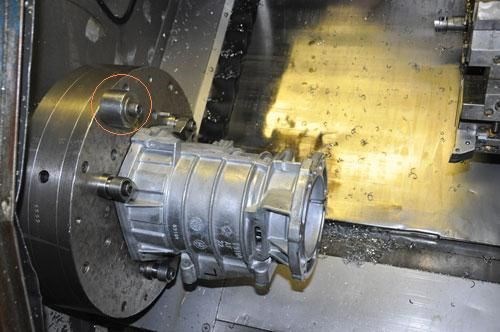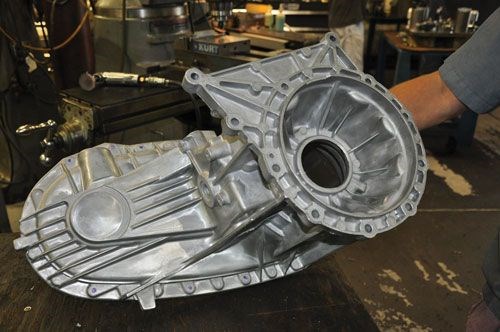Balancing Act
Lathe spindle balancing enables this shop to turn key features of castings rather than performing boring or facing operations on a mill.
Share







Lathe spindle balancing enables this shop to turn key features of castings rather than performing boring or facing operations on a mill.
Here’s another example of how I learned about some nifty thing a shop is doing while visiting to create an article on a different topic. A few months ago, I visited Millennium Machining, a Tier Two auto supplier in Macedon, New York, to create this article about its use of web-based, remote spindle monitoring software.
As I toured the facility, I found that Millennium commonly turns critical features of oddly shaped castings rather than machining them on a mill. Proper machine balancing plays a key role in effectively turning such non-symmetrical components. One example is the transmission extension shown above-left fixtured to a Doosan turning center. Instead of performing boring and facing operations on a mill, the shop balances the rotating elements of this lathe to allow those features to be turned. The shop says this creates better surface finishes and more accurate bore alignment.
In the case of the extension, a counter-balancing weight (circled) has been added to the faceplate. Depending on the application, balancing may also be accomplished by removing weight from specific areas on the faceplate. Although the extension doesn’t create a drastically unbalanced turning condition, the transmission front case shown above-right does. After balancing, lathes will perform similar turning operations for these unwieldy front cases, too.
Related Content
-
Kennametal's Expanded Tooling Portfolio Improves Performance
The company has launch eight new products that expand on and support existing platforms across multiple applications.
-
Allied Machine Drill System Provides Enhanced Chip Evacuation
Eastec 2023: The T-A Pro drill body incorporates straight flutes designed for optimized coolant flow and rigidity.
-
Kay Engineering's Gundrilling Machine Performs Range of Operations
Kay Engineering’s DeHoff 20144 is used to perform gundrilling, pull boring, roller burnishing and thread tapping.













.png;maxWidth=300;quality=90)







